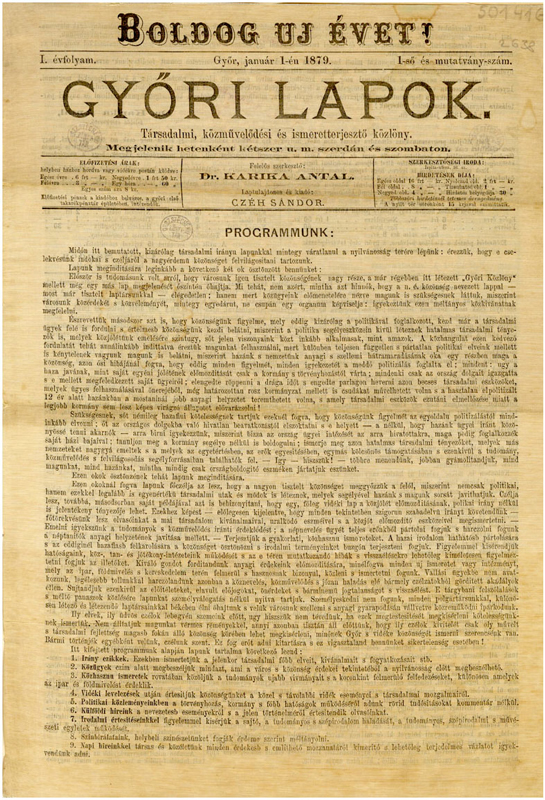


Although National Széchényi Library is supposed to receive copies of all the printed materials produced within the borders of Hungary, there have been large gaps in newspaper volumes submitted in such a way. Since 1860, there has been an enormous increase in the number of dailies and periodicals, so it was no longer possible to keep up with the flow. The establishment of National Newspaper Library was an achievement of József Szinnyei, Sr, the greatest Hungarian bibliographer of the time, who had been commissioned with this task in 1884, by Ágoston Trefort, then Minister of Culture. During many years of diligent collecting, Szinnyei managed to fill in many of the existing gaps in the volumes of newspapers. Newspaper collections of several large Budapest-based libraries were also combined with the collection of National Széchényi Library.
A state-of-the-art arrangement of the collection was also begun under Szinnyei’s leadership. The increasingly significant collection became a separate division of the Library in 1888. The storage arrangement of newspapers was modified during the 1930s and new catalogues were also set up. Increasing difficulties in preservation led to the establishment of a Microfilm Collection in 1952. This unit of NSZL is responsible for transferring newspapers and periodicals to a microfilm format. Since 1971, the former Newspaper Collection has no longer been an independent unit of National Széchényi Library.
Read more
Newspaper and Periodical Collection comprises all the periodically published items which appear at least once a month. In its efforts to provide a complete collection, NSZL aims at acquiring as many Hungarian-language newspapers published abroad as possible. It also collects important newspapers and periodicals from the neighboring countries and periodicals of major importance published abroad. The scope of collection focuses on publications dealing, first of all, with history, the history of literature, linguistics, library science and other professional literature.
The collection includes approximately 250,000 volumes. Its value is not determined by size alone but rather by the fact that almost three quarters of Hungarian and international newspapers in the collection represent the only surviving copies of those particular issues.
The collection includes essentially every significant publication from Nova Posoniensia, first issued in 1721 in Latin, to present-day periodicals. Its most important representatives are old Hungarian newspapers (Magyar Hírmondó, Magyar Kurír, Hadi és Más Nevezetes Történetek), leading newspapers of the 18th and 19th centuries (Magyar Museum, Uránia, Tudományos Gyűjtemény), famous fashion magazines of the Reform Age (Regélő, Pesti Divatlap, Életképek, Honderű), newspapers published during the 1848-1849 revolution and freedom fight (Marczius Tizenötödike, Munkások Újságja, Közlöny, Kossuth Hírlapja, Komáromi Lapok) and leading periodicals of the 20th century (A Hét, Nyugat, Huszadik Század, Magyar Géniusz, Jövendő).
Certain volumes of some of the outstanding examples in the history of newspapers are part of National Széchényi Library’s collection. Thus, for instance, two issues of the first French newspaper, the Gazette, from 1637 and 1645, almost a hundred volumes of Acta Eruditorum, all the volumes of Journal des Sçavans, starting with 1667, and more than sixty volumes of the official Wiener Zeitung.





